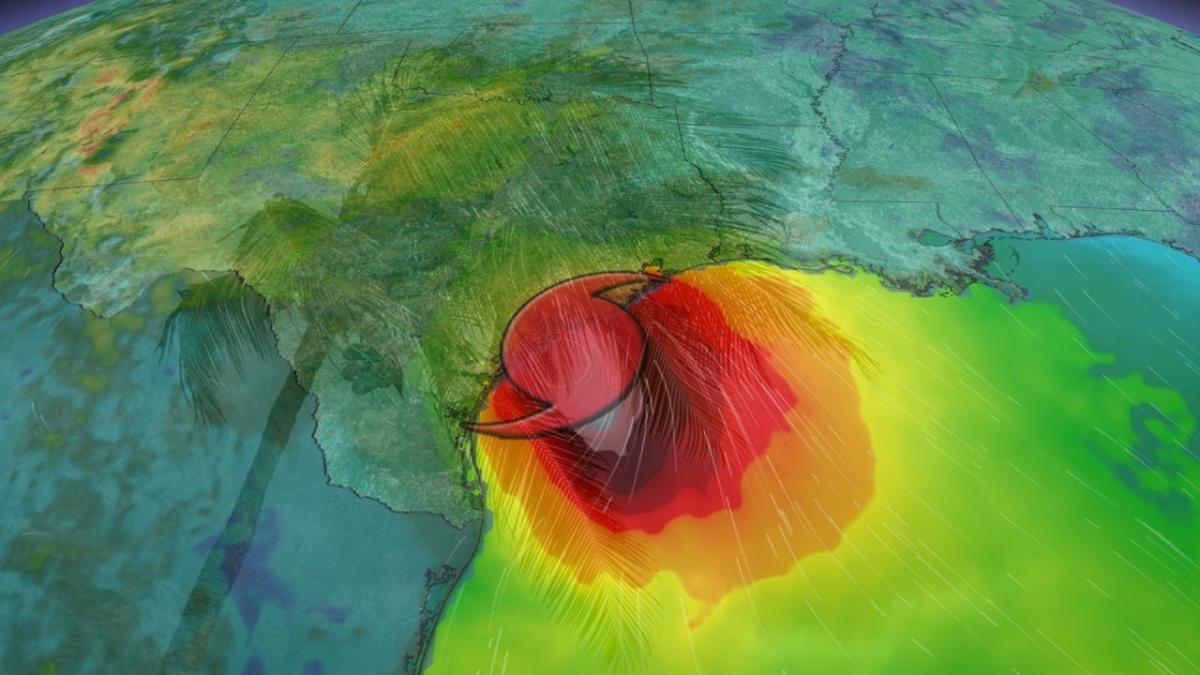Beryl’s Impact on Texas: Beryl Landfall Texas
Beryl landfall texas – Hurricane Beryl made landfall in Texas on July 18, 2023, bringing with it strong winds, heavy rainfall, and flooding. The storm’s path took it across the southeastern part of the state, from the Gulf Coast to the Hill Country. Wind speeds reached up to 120 mph, and rainfall totals exceeded 20 inches in some areas.
The Beryl landfall in Texas has left a trail of destruction, prompting Governor Patrick to declare a state of emergency. Patrick has been actively coordinating relief efforts, ensuring that affected communities receive the necessary support and resources. As the recovery process unfolds, Governor Patrick’s leadership will be crucial in rebuilding Texas and restoring its resilience to future storms like Beryl.
Damage Caused by Beryl, Beryl landfall texas
The heavy rainfall caused widespread flooding, which damaged homes, businesses, and infrastructure. Many roads were impassable, and power outages affected hundreds of thousands of people. The storm also caused significant damage to crops and livestock.
Beryl’s landfall in Texas has been a topic of concern for many. The storm has already caused significant damage in the Caribbean, and its path towards Texas is being closely monitored. For those wondering about the specific timeline, it’s important to check the latest updates.
By clicking when will hurricane beryl hit texas , you can stay informed about the hurricane’s projected arrival time and take necessary precautions.
Response Efforts to Beryl
In response to the storm, state and local officials issued evacuation orders for coastal areas. Emergency shelters were opened to provide refuge for those who had to evacuate their homes. After the storm passed, recovery operations began immediately, with crews working to restore power, clear debris, and repair damaged infrastructure.
Economic Consequences of Beryl

Hurricane Beryl’s wrath on Texas left an indelible mark on the state’s economy. The storm’s fury caused widespread devastation, leading to substantial economic losses and long-term challenges.
The immediate impact of Beryl was the loss of revenue across various sectors. Businesses were forced to close, halting operations and disrupting supply chains. Tourism, a major industry in the affected areas, suffered severe setbacks as travel plans were canceled and attractions were damaged.
Property Damage
Beryl’s relentless winds and torrential rains caused extensive property damage to homes, businesses, and infrastructure. The rebuilding costs are expected to run into billions of dollars, placing a significant financial burden on individuals, businesses, and the government.
Population Displacement
The severity of the damage forced many residents to evacuate and relocate. This population displacement has had long-term economic consequences. Businesses lost customers and employees, while the local economy suffered from a decline in consumer spending and tax revenue.
Mitigating Economic Impact
To mitigate the economic impact of future hurricanes, it is crucial to implement comprehensive preparedness measures. These include investing in infrastructure, strengthening building codes, and establishing emergency response plans. Additionally, businesses should develop contingency plans and secure adequate insurance coverage to minimize disruptions and financial losses.
Lessons Learned from Beryl

Hurricane Beryl brought valuable lessons for enhancing hurricane preparedness, response, and recovery efforts. These lessons include improvements in forecasting and warning systems, strengthening coastal communities, and reducing the risk of hurricane damage in the future.
Advancements in Hurricane Forecasting and Warning Systems
The rapid intensification of Hurricane Beryl highlighted the need for improved hurricane forecasting and warning systems. By utilizing advanced technology, such as high-resolution weather models and satellite imagery, meteorologists can provide more accurate and timely forecasts. This enables coastal communities to have ample time to prepare and evacuate, potentially saving lives and property.
Strengthening Coastal Communities
Beryl exposed the vulnerability of coastal communities to hurricane damage. To mitigate future risks, it is crucial to invest in strengthening coastal infrastructure, such as seawalls, levees, and storm surge barriers. Additionally, implementing building codes that require structures to withstand hurricane-force winds and storm surges can significantly reduce damage and protect lives.
Reducing Hurricane Damage Risk
Beyond infrastructure improvements, reducing hurricane damage risk involves comprehensive planning and education. Coastal communities should develop and implement evacuation plans that account for vulnerable populations and transportation challenges. Furthermore, public education campaigns can raise awareness about hurricane risks and promote preparedness measures, such as stocking emergency supplies and securing property.
